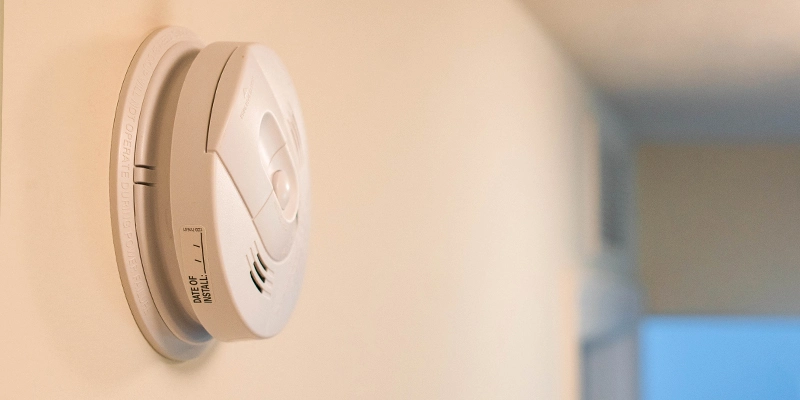
In the search for the right smoke detector for your home, you will likely see a face-off between the photoelectric and the ionization smoke detector. Both seem to have qualities that are important to homeowners concerned about the threat of smoke and fire. Yet, when you take a closer look, you will see the devices work in very different ways.
What Is a Photoelectric Smoke Detector?
This device aims a focused light source into a sensor chamber; when smoke enters the chamber, it reflects light, which then triggers the alarm. Photoelectric smoke detectors are best at detecting large smoke particles from slow, smoldering fires.
What Is an Ionization Smoke Detector?
An ionization smoke detector contains a small bit of radioactive material that sits between two plates with electrical charges; the charge ionizes the air and causes a current to move between the plates. If smoke enters this chamber, the ion flow is disrupted and the alarm sounds. Ionization smoke detectors are well equipped to sense the very small smoke particles produced by fast-moving, flaming fires.
These two types of smoke detectors identify smoke and fire with different processes, which means their degree of effectiveness will depend on the specific fire situation.
When Is a Photoelectric Smoke Detector Best?
Photoelectric smoke alarms respond fastest to smoldering fires that begin slowly and burn without a flame for a long period of time. It’s no secret that many deaths from residential fires occur as a result of smoke inhalation rather than flames. Being able to detect smoke early can be a lifesaver, helping families to escape before the flames have even started and prior to potentially life-threatening smoke inhalation. These types of fires often occur when small flames from things like candles or cigarettes are left unattended.
When Is an Ionization Smoke Detector Best?
Ionization smoke detectors respond faster to smoke from flaming fires than a photoelectric device does. Most flaming, fast-moving fires are a result flammable liquids, wood, or paper catching fire. These are items that produce flames right away and do not have as much smoke as a smoldering fire. For this reason, photoelectric devices (mentioned above) will provide family members with less advance warning to get to safety before hot, flame-intense fires engulf the residence. Ionization devices more quickly detect low-smoke fires, setting off the alarm sooner.
Doubly Safeguard Your Home with Photoelectric and Ionization Technologies
You can create the safest environment possible for your family by installing a mix of photoelectric and ionization smoke detectors. It’s too risky to go with one and not the other because there is no way to predict what type of fire threat your home may experience. Some smoke detectors utilize both ionization and photoelectric technologies. These types of smoke detectors are known as “dual” smoke detectors and are widely available at home improvement stores and online at a variety of price points and from several brands.
As a homeowner, you want to do all you can to take advantage of the potentially lifesaving technology available for smoke and fire detection. No matter the type of smoke detector you select, it’s crucial that you test your detector, routinely. To learn more about testing your smoke detectors to ensure they are working correctly, check out this blog.
Protect Your Home and Family With Help from Aire Serv
Time to step-up the fire safety measures in your home? Let our local Aire Serv® team professionally install photoelectric and ionization smoke detectors to deliver your home the ultimate protection against smoke and fire.
Our experts will walk you through your best smoke detector (and carbon monoxide detector) options and provide professional installation to bring you peace of mind and a higher level of safety for your home. Call (855) 512-2886 or schedule an appointment online now.

